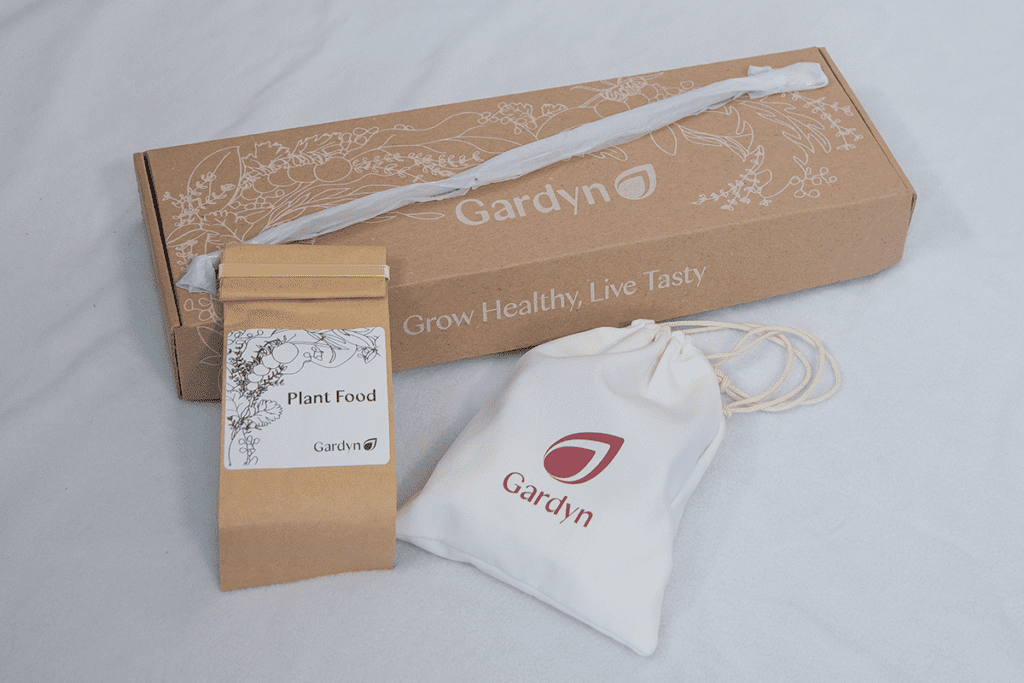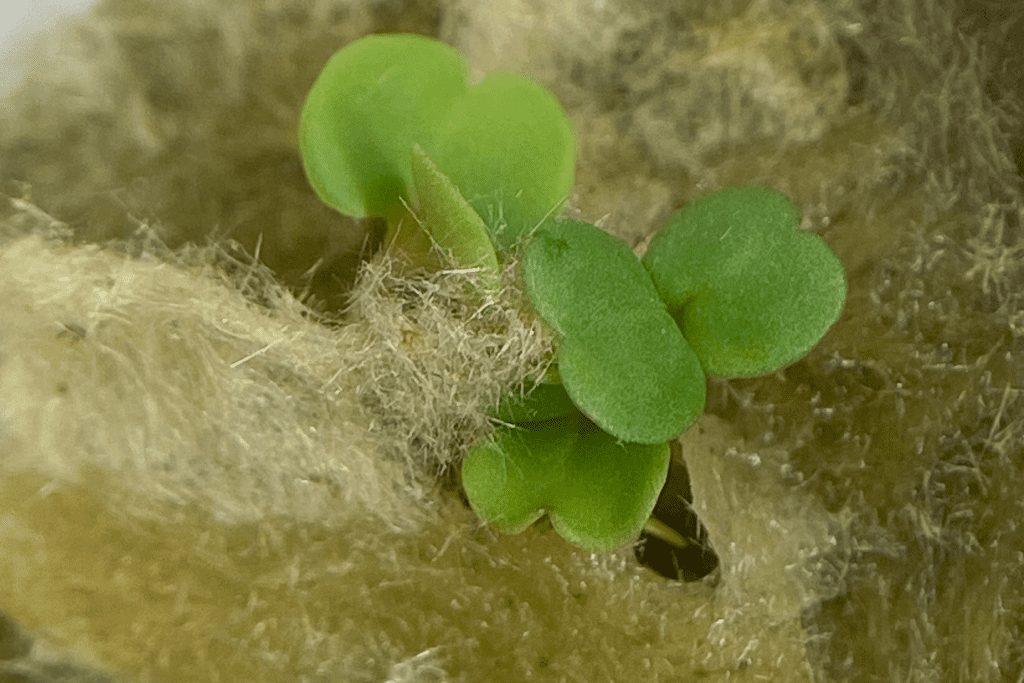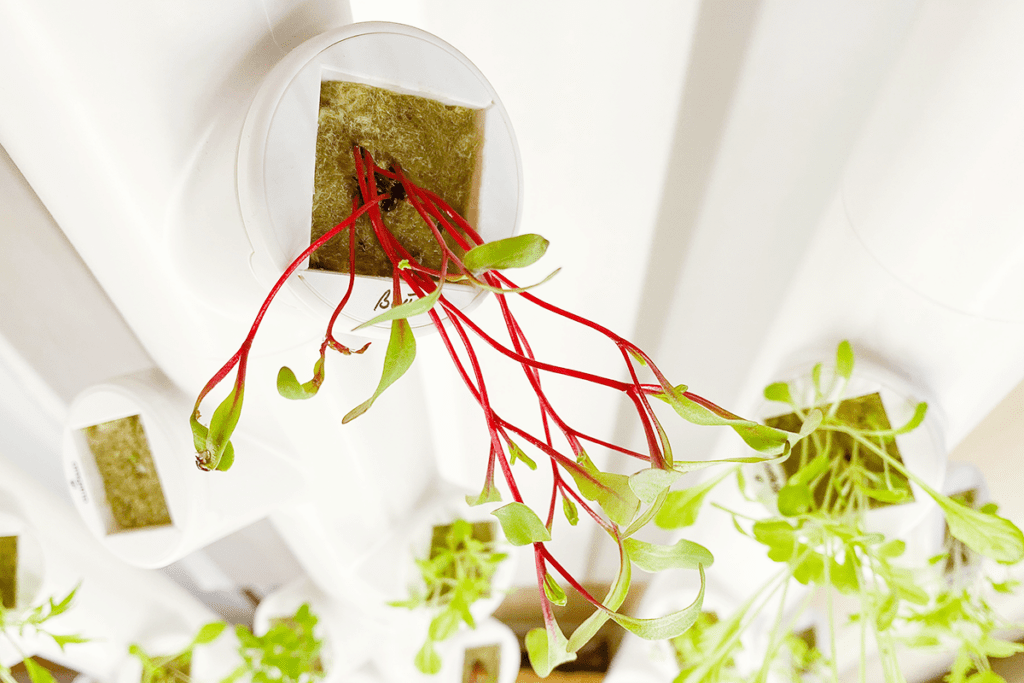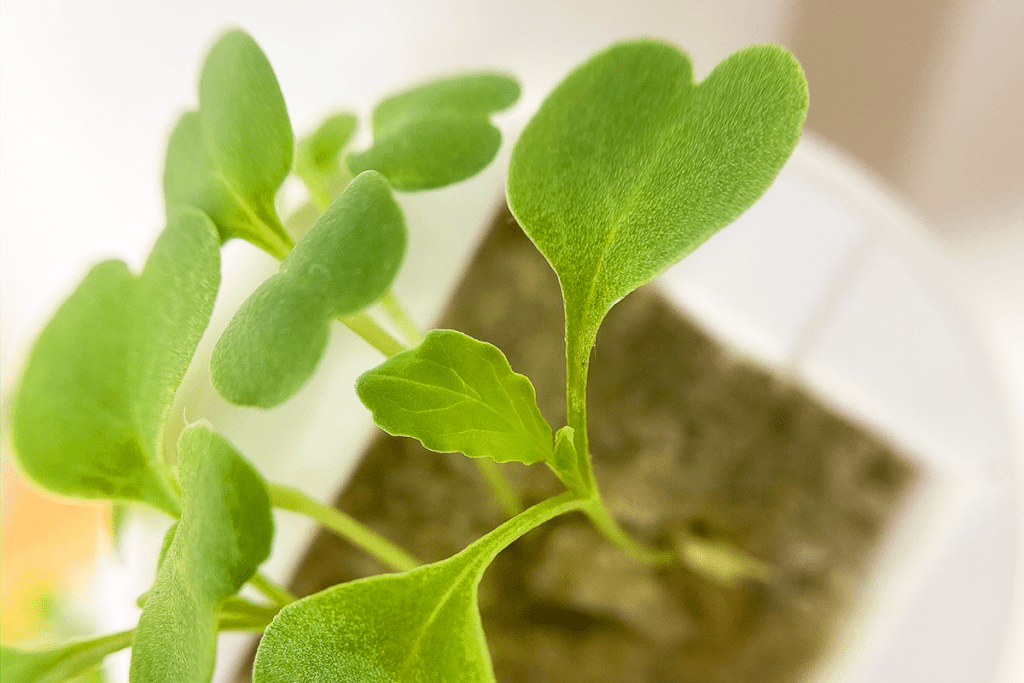Sprouting seeds is as exciting as it is precarious. The life that emerges from seeds is as tender and sensitive to the environment as a newborn baby. Germination, like birth, is also an incredibly stressful process, and one of the more difficult phases a plant will endure in its entire life cycle. By understanding the science behind germination, we can optimize the Gardyn settings and surrounding environment to give seeds and new sprouts the best chance of thriving. For the best shot at germination success, Gardyners should pay attention to plant food usage, yCube water saturation, air temperature and humidity, and consider the needs of each plant species.

Plant Food
Some Gardyners might accidentally add plant food too early– an understandable misstep when we want our plants to be healthy out of the gate. Unfortunately, studies have shown that fertilizers can delay germination or even prevent it altogether. Seeds are created with all the nutrients they need to fuel them to sprout, so adding more can overwhelm them. Imagine trying to feed a burger to an infant still on the bottle! Just as babies need time to grow before they can accept more robust meals, only introduce fertilizer to a plant if it is sprouted and well-established.
If some seeds don’t sprout by day 10 when it’s time to add plant food, consider moving them to a tray and using our yCube Refill Tips protocol. Similarly, if your Gardyn already has mature plants with fertilizer in the water, use the tray technique to sprout any new yCubes first before adding them to the Gardyn. Wait at least for the cotyledons, or embryonic leaves, to fully develop before putting them in a Gardyn with plant food. Waiting for a set of true leaves to grow will only improve your plant’s chances of surviving the move.

yCube Saturation
Another common variable that most affects germination speed and success is how saturated the yCubes become. Germination requires oxygen. Most seeds access dissolved oxygen in the water itself and in the surrounding air pockets. To ensure there’s enough oxygen present for your seeds to sprout, make sure yCubes remain moist but not soaked or saturated. If you notice the top of your yCube becomes very dark or see any pooling of water near the rim of the yCube surface, it could be a sign that the rockwool plugs are too wet. Some species do well in saturated conditions while others, like herbs, can be very sensitive. If you see some yCubes have become saturated, place them on a dry tray, monitor daily to maintain moisture content, and give them a little extra patience. If you notice white mold forming, it’s normal and typically caused by ungerminated seeds. If you see it form on an ungerminated yCube, it’s a good sign to replace it and try again.

Temperature, Humidity & Light
Controlling your home environment is helpful for germination. Some species prefer cooler temperatures, and some sprout fastest in warmer temperatures, but the seeds included in our Plant Portfolio all will successfully germinate at 75 degrees Fahrenheit. If your seeds are sprouting in a warmer environment, be patient with cool weather crops like Kale and Butterhead. Similarly, if you’re in a cooler environment it could take some extra time for warmer weather crops like Sweet Thai Basil or Jalapeños.
It’s equally important to consider humidity in relation to air temperature, as it can often be the determining factor between sprouts that thrive and sprouts that immediately shrivel. If your air is too dry it can stress out new seedlings or even completely overwhelm them. If you find your air is excessively dry, consider adding a humidifier to the area. A higher humidity can benefit plants by encouraging photosynthesis, and controls how much and how quickly the plants drink. If the plant is a biological “straw” with the roots at one end and the leaves at the other, the humidity largely controls how hard the air is “pulling” on that straw.
Some plants need light to germinate, so it’s a good idea to keep your Gardyn’s lights on during the germination process. The light does not have to be too intense, so if you prefer a softer glow it is fine to reduce the light intensity to 15-20% while waiting for seeds to sprout.

Patience is Key
Keeping yCubes moist but not soaked, as close to 75F as possible, with no plant food added, and next to soft indirect light will give yCubes the best chance of sprouting. The last ingredient comes from the Gardyner: Patience! Sometimes yCubes that look like “duds” will be a surprise and sprout late! Seeds have even sprouted as late as 40+ days in some cases, so don’t give up on your yCubes too early!
Germination can sometimes be tricky, but paying attention to the fine details of the process can help improve success.